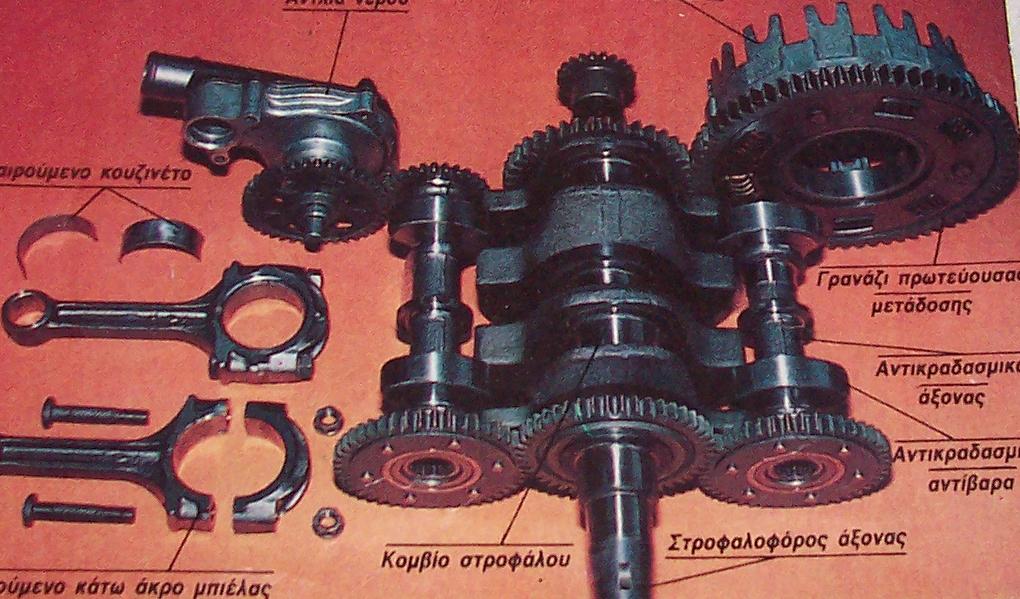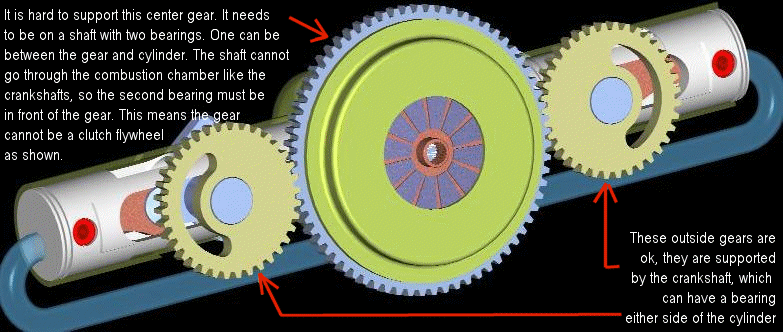Pneumatic,
It is not a problem.
If your argument is correct, i.e. that the center gear does need a pair of bearings at a reasonable distance, then instead of using a shaft penetrating the combustion chamber, it is more simple and functional to move the center gear lower or higher, thereby the supporting ‘necessary’ long shaft with the two bearings to pass outside the combustion chamber. This way the primary shaft of the gearbox can be located lower or higher (whatever seems better) than the crankshaft axes, while the synchronization of the two crankshafts is as good as before. The drawback : a little larger gear diameter.
These in theory, because things are much simpler and easier as you will see in the following.
In my previous reply the Yamaha TDM was mentioned and here is a photo of TDM’s internals.

In this photo what makes impression is the ‘complication’.
Count the additional shafts, gears, shock absorbers, bearings and imagine the additional weight, cost, faults and friction. And all these for what? Just to balance the 1st order inertia forces!
In the sane photo one can also see that the clutch basket gear is rotatably supported on a unique bearing (which seems less than 20mm wide). Why so simple? Because the loads it carries do no need something more. If this basket gear had to be used as the center gear in a PRE-Junkers engine, all you need is a projection (like an immovable short shaft) from the center of the block. That simple, compact and robust.
If you still have doubts, just imagine the way a front wheel of a car is rotatably supported to its shaft and then imagine the huge loads – at all directions – the front wheel has to carry.
And regarding bearing loads:
The bearing of the basket gear of a conventional motorcycle is heavily loaded: the force applied to the teeth of the basket gear from the teeth of the crankshaft gear generates:
- a torque that, through the clutch, is transferred to the primary shaft of the gearbox,
- and a force (equal to the force applied to the teeth of the center gear from the crankshaft gear) that heavily loads the bearing(s) of the basket gear.
In the case of the Junkers-PRE the bearing of the center gear remains actually free of loads: the two crankshaft gears apply equal and opposite forces (i.e. a pair of forces) to the center gear (the forces are equal because the two crankshaft share the same instant gas pressure inside the common cylinder), so the center gear’s bearing carries actually nothing. I suppose I could keep the shaft of the center gear of the Junkers-PRE engine by hand.
Thanks
Manolis Pattakos
Originally Posted by revetec




 Reply With Quote
Reply With Quote



